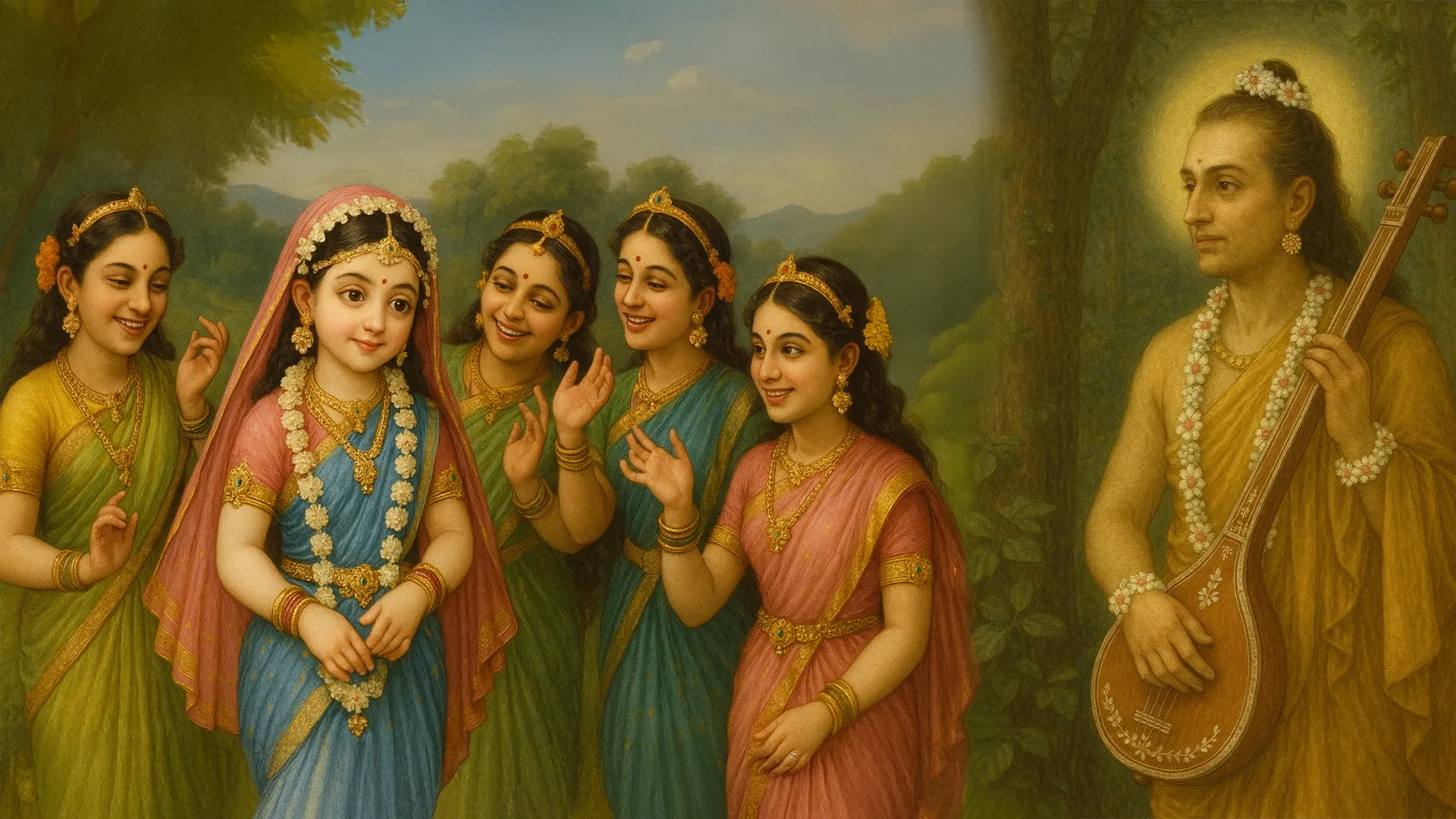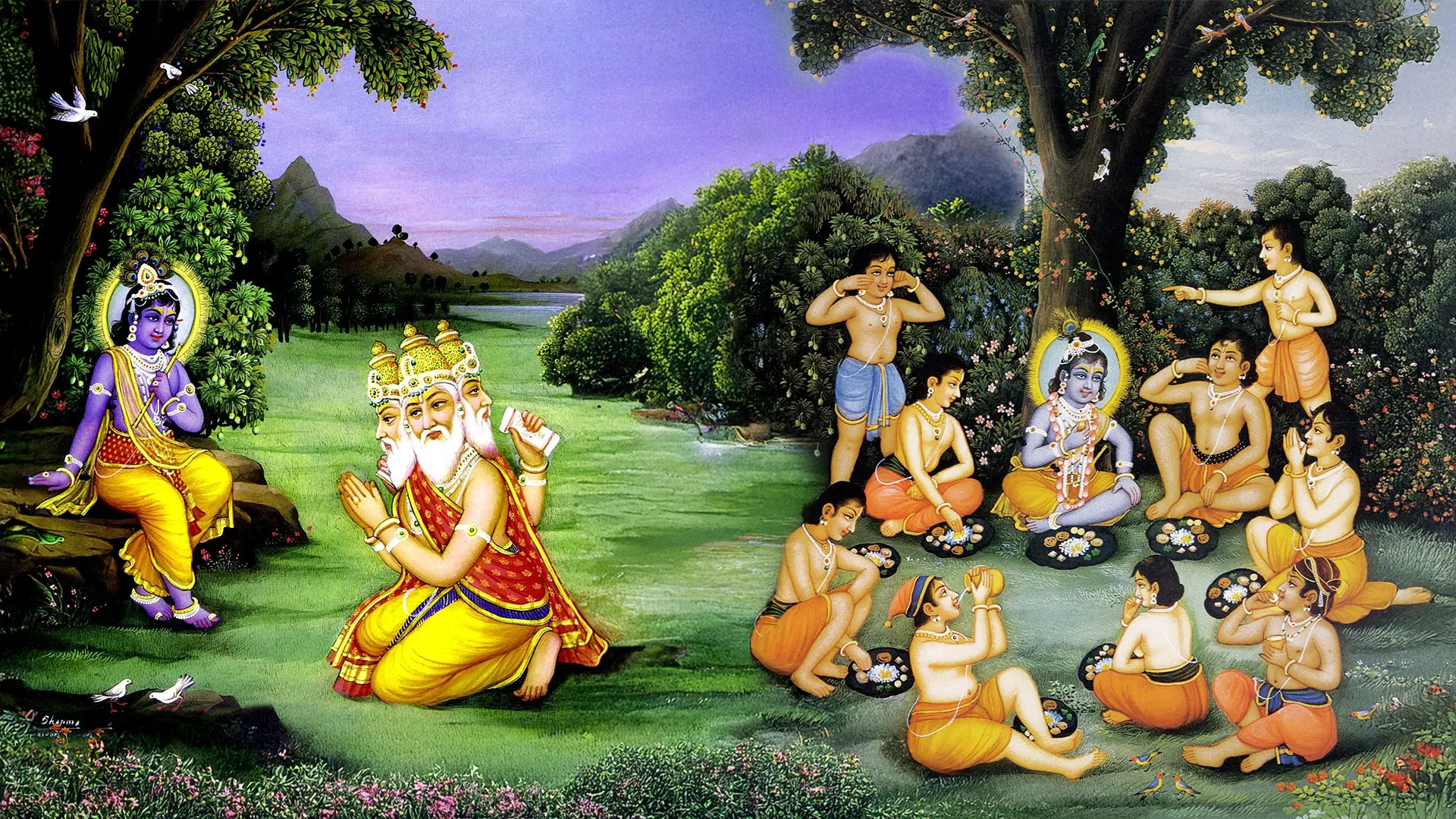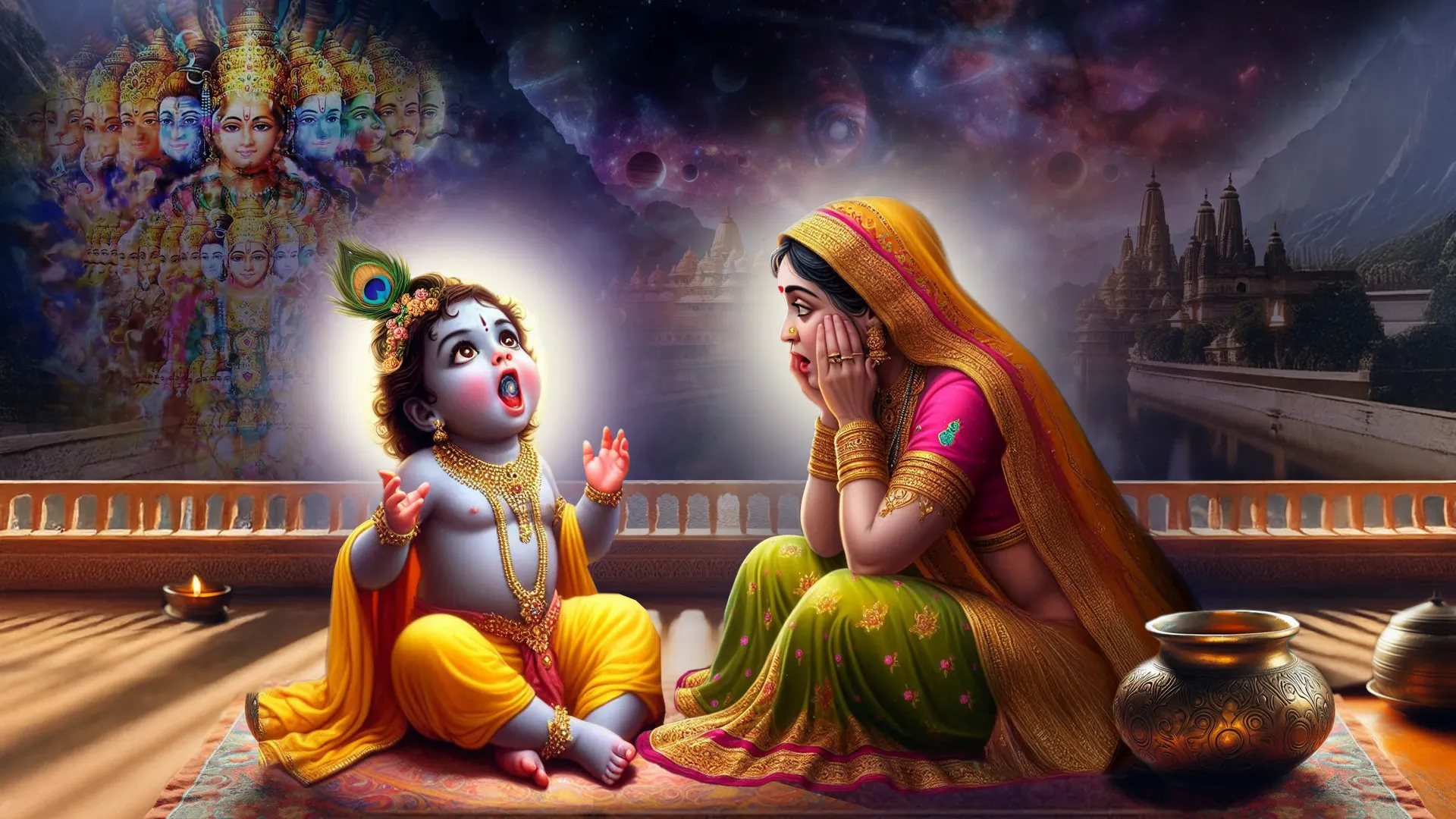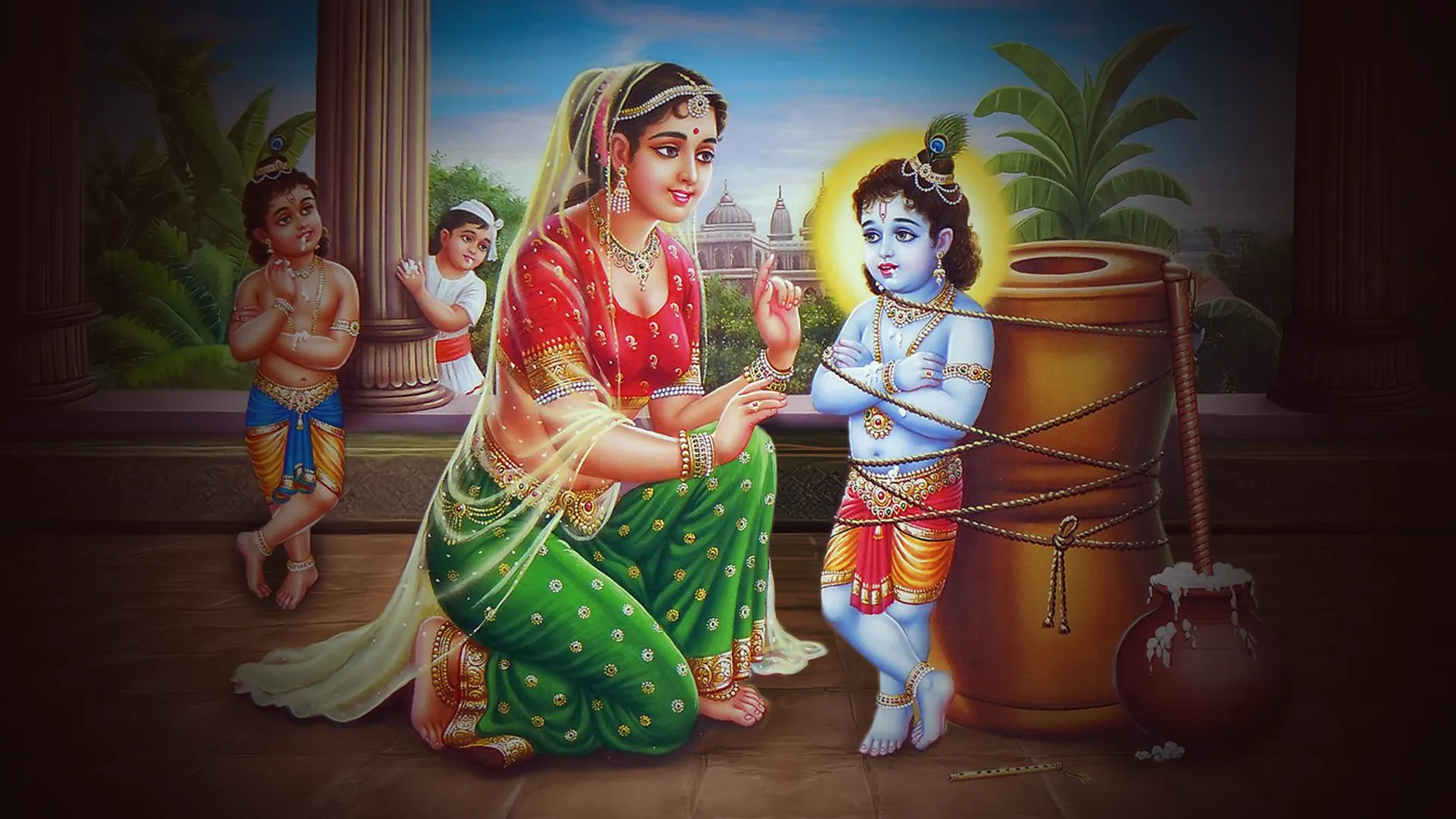The fourth day of Navaratri is dedicated to Maa Kushmanda, the creator of the Universe. Her name comes from various Sanskrit words where Ku (कु) means little, uṣma (उष्मा) means warmth, energy and aṇḍa (अण्ड) means cosmic egg. Thus, the name Kushmanda (kuṣmāṇḍā/कुष्मांडा) means the one who is the creator of this "little cosmic egg" called the Universe. The word Ku (कु) also represents number one, so the name also suggests that she is the first source of all energy, light, and life or the Aadi Shakti (Ādi Śakti) avatar. Maa Kushmanda is often called the smiling Goddess as she created the whole Universe with a little (ku/कु) flashing smile.
Maa Kushmanda has eight hands and is thus also known as Ashtabhuja (aṣṭabhujā/अष्टभुजा) Devi. She holds a trident, discus, sword, hook, mace, bow, arrow, and two jars of amrit (elixir) and blood. Her one hand is always on abhayamudra, from which she blesses all her devotees. She rides on a lion (dharma). She is seated in the core of the Sun, providing direction to Surya and dispelling the darkness of ignorance with her dazzling smile. She is the Jagatprasuti (jagatprasūti/जगत्प्रसूति), the mother who has birthed, energized, and nurtures the Universe.
Rituals and Worship of Maa Kushmanda
When worshipping Goddess Kushmanda, don yellow attire and adorn the deity with fragrant yellow sandalwood paste. While reciting the sacred mantra, present offerings of vermilion, sacred thread (mowli), unbroken rice grains (akṣat), and a touch of saffron on a betel leaf as a loving tribute to the Goddess. To enhance the divine connection, consider reading from the Durga Saptashati or Siddha Kunjika Stotra, which can bestow profound benefits. As yellow holds a special place in Mother Kushmanda's heart, present her with yellow clothing, vibrant bangles, delectable sweets, and the symbolic lotus during your devotional worship. Additionally, offering the Malpuwa bhog to the deity can usher in good fortune and invoke blessings upon the seeker.
Maa Kushmanda and the Tale of Birth of the Universe
After their victory over Jatukasura, two formidable asuras (demons) named Mali and Sumali began an intense tapasya (penance) of Lord Shiva. Their tapasya was so profound that it caused their bodies to emit a brilliant, radiant glow. Suryadev, the sun god, noticed this increasing brilliance on Earth and became intrigued. Leaving his usual position in the solar system, he ventured closer to investigate, inadvertently causing disturbances in the universe. Unbeknownst to them, the brothers were deeply engrossed in meditation and remained oblivious to the Sun's approach.
As the Sun drew nearer, the intense radiance reduced Mali and Sumali to ashes. When Lord Shiva learned of this, anger consumed him, and he hurled his Trishul (trident) at Suryadev, rendering the sun god unconscious and casting the entire world into darkness. The disruption led to an imbalance among the celestial bodies.
Rishi Kashyapa, the father of the devatas (gods), was devastated upon seeing Suryadev lying unconscious on the ground. Overwhelmed by sorrow, he cursed Shiva, prophesying that he would also experience the loss of his son. Realising his grave mistake, Shiva turned to Parvati for assistance. He helped her realise that she was the ultimate source of all energy and the mother of the universe.
Parvati then approached where Suryadev lay and conjured a sphere of fire and light, which we now know as the sun. As she emerged from the fiery ball, she radiated like the eternal beauty of the cosmos. With a little smile, she produced a “cosmic egg”, and from it, creation began unfolding, and galaxies, planets, plants, animals, insects, and humans came into being.
After creating the Universe, Maa Kushmanda created three supreme goddesses- Mahakali, Mahalakshmi, and Mahasarswati. Mahakali was born from her left eye, Mahalakshmi from her centre eye on her forehead, and Mahasarswati from her right eye. From the body of Mahakali, a male and a female were born. The male, Shiva, had ten arms and five heads, while the female, Saraswati, had four arms and one head.
Similarly, from the body of Mahalakshmi, a male and a female were born. The male, Brahma, had four arms and four heads, while the female, Lakshmi, had one head and four arms. When Maa Kushmanda glanced at Mahasaraswati, a male and a female were born from her body. The male was called Vishnu and had four arms and one head, while the female was named Shakti and had four arms and one head. Maa Kushmanda then gave Shakti to Shiva, Saraswati to Brahma, and Lakshmi to Vishnu as their consorts.
The Adi Shakti, in the form of Maa Kushmanda, bore the Univers and chose to reside in the sun's core, fueling it with the power to radiate warmth and light to the Universe. Her luminosity powers the sun, and this radiant energy makes her known as "Surya Mandala Antarvardhini," indicating her presence within the solar system.








